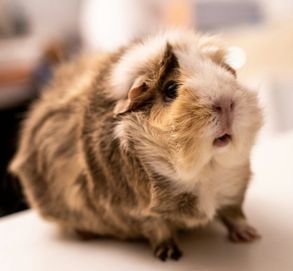
“Ringworm” is a common problem in many small mammals. Trichophyton mentagrophytes var. mentagrophytes is the most common. Less common: Microsporum gypseum (rabbits and rodents) vs Microsporum canis (Guinea Pigs)
Patients exhibit round to oval (sometimes irregular) patches of often localized hair loss with redness, crusting, and scaling commonly around the face, ears, and head. Variable itchiness.
Conditions that appear similar include ectoparasite infestations such as mites, barbering or self-mutilation, fight wounds, and bacterial dermatitis.
Real PCR testing to detect the DNA of the causative fungus is now the testing of choice. Dermatophyte Test Medium (DTM) culture can also be used however results may take as long as 21 days. Wood’s lamp examination gives variable results as not all species fluoresce.
Treatment involves prescription systemic antifungals. Treatment needs to continue 21 days past 2 consecutive negative cultures to assure elimination of the infection. Disinfection of habitat is key. Use bleach at a 1:10 dilution with water. Discard any cage furniture that cannot be disinfected (wood/other porous surfaces) as they represent a potential source of re-infection. Topical antifungals may be used if lesions not on the face. Vitamin C supplementation is important for guinea pigs to help their skin heal.
Good in most cases with proper treatment. Resistant infections can occur, but they are not common.
Many dermatophytes carried by small mammals can be transmissible to humans.
Recheck exams are recommended every 3 weeks until 2 negative cultures or PCRs have occurred.
Copyright © All Rights Reserved
